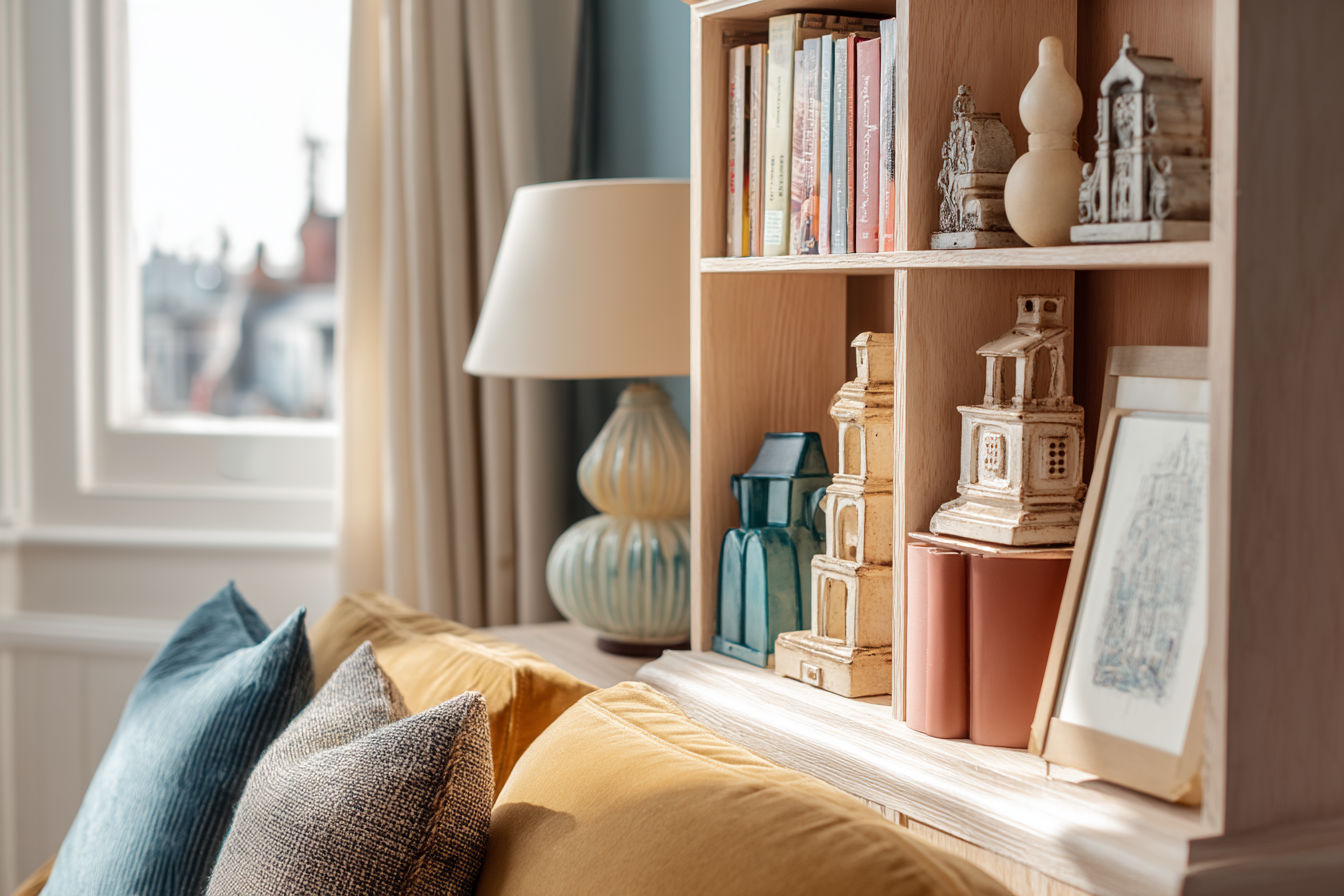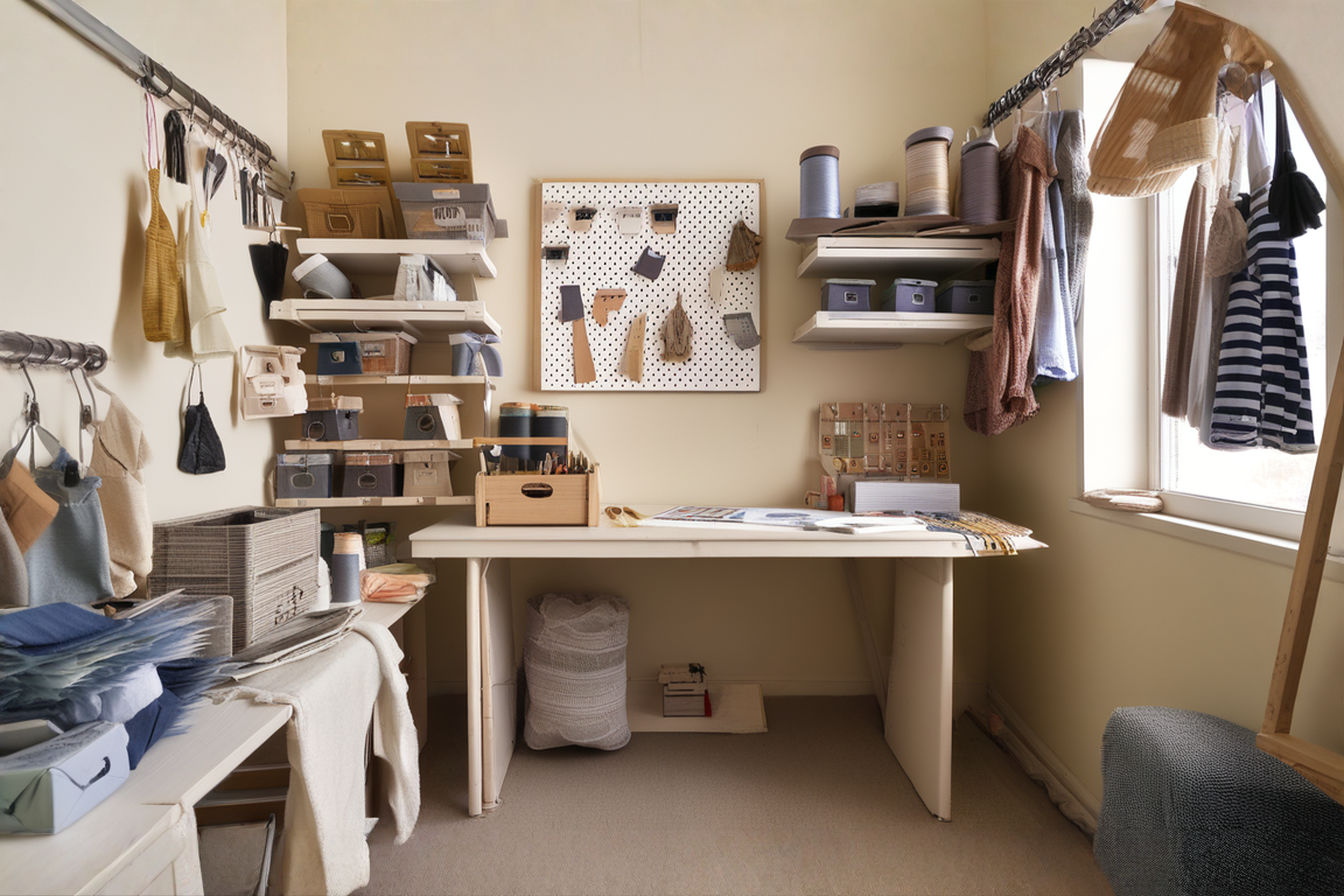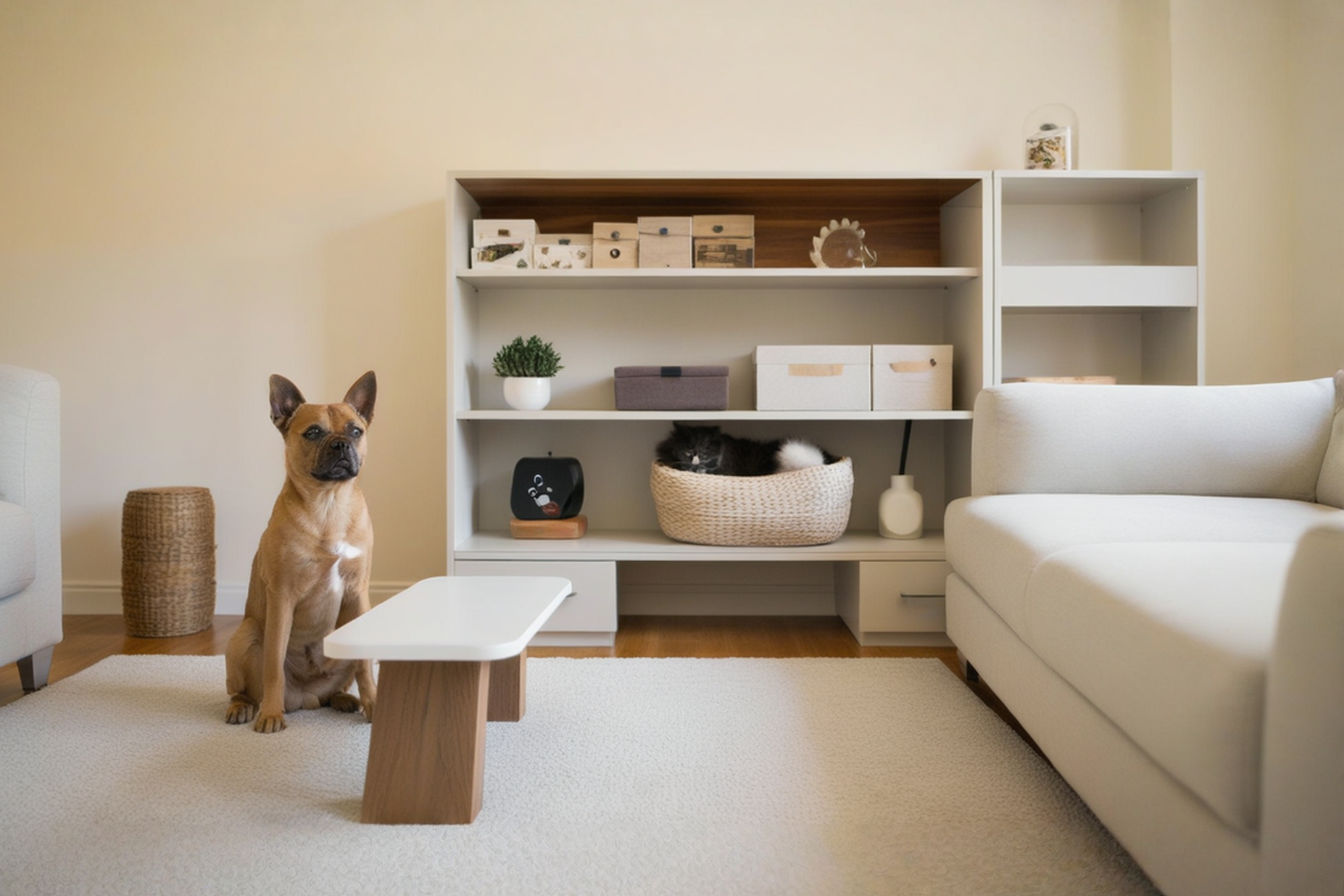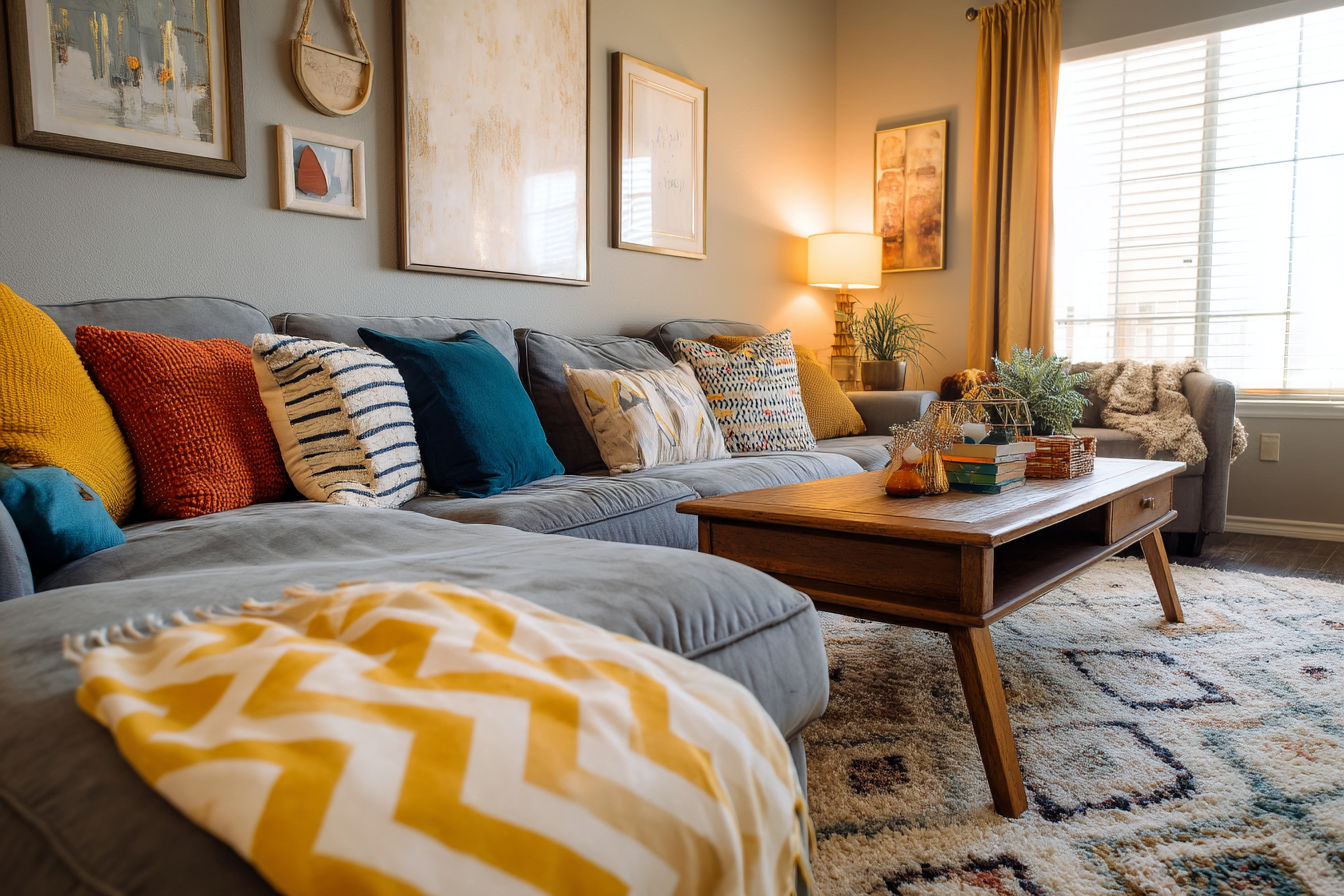This post may contain affiliate links. If you make a purchase through these links, we may earn a commission at no additional cost to you.
Easter brings with it the promise of renewal, vibrant colors, and the perfect opportunity to refresh your home with seasonal decorations. However, store-bought Easter décor can quickly add up, leaving your wallet feeling considerably lighter. The good news? Creating beautiful Easter decorations doesn’t require breaking the bank. With a little creativity and some basic supplies, you can craft charming, personalized Easter embellishments that rival their commercial counterparts—all while keeping costs minimal.
This guide presents seven delightful DIY Easter decorations that combine simplicity with style. Each project utilizes affordable materials, many of which you might already have around your home. From elegant egg displays to charming table settings, these handcrafted touches will transform your space into a springtime haven without the hefty price tag.
The Joy of Easter DIY: Why Handmade Decorations Matter
Handmade Easter decorations offer more than just cost savings—they provide an opportunity to create meaningful traditions and memories. When you craft your own decorations, you infuse your home with personal touches that reflect your unique style and preferences. These handmade elements tell a story that mass-produced items simply cannot match.
Creating family connections through crafting has immeasurable value. When children participate in making Easter decorations, they develop a sense of accomplishment and pride in contributing to the family celebration. These crafting sessions often become cherished memories that family members look back on fondly for years to come.
The environmental impact of choosing DIY over store-bought decorations deserves consideration as well. By repurposing items that might otherwise end up in the trash, you’re participating in a more sustainable approach to holiday decorating. This mindful consumption teaches valuable lessons about resourcefulness and environmental stewardship.
From a purely practical standpoint, the financial advantage of DIY decorations is substantial. A store-bought Easter wreath might cost $30-$60, while a handmade version using materials from nature and items you already own might cost less than $5. Similarly, commercial Easter table settings can easily exceed $100 for a family gathering, whereas creative DIY alternatives might require just $15-$20 of supplies.
Essential Supplies for Budget Easter Decorating
Before diving into specific projects, assembling a basic toolkit of supplies will prepare you for Easter crafting success. These versatile materials serve as the foundation for countless DIY possibilities:
Basic craft supplies worth investing in include a good pair of scissors, craft glue or a hot glue gun, paintbrushes in various sizes, and acrylic paints in springtime hues like pastel pink, blue, yellow, and green. Craft stores often offer seasonal sales, making Easter the perfect time to stock up on these essentials at reduced prices.
Your home likely contains numerous household items ready for repurposing. Empty glass jars, cardboard from packaging, scraps of fabric, newspaper, and even empty eggshells can transform into beautiful Easter decorations. Before purchasing new materials, take inventory of what you already have—you might be surprised by the creative possibilities hiding in your recycling bin.
For additional materials, consider budget-friendly sources beyond traditional craft stores. Dollar stores offer an array of affordable craft supplies, from ribbon to artificial flowers. Thrift shops frequently have fabric remnants, baskets, and glassware perfect for upcycling. Even nature provides free decorative elements—freshly cut branches, pinecones, and wildflowers bring organic beauty to your Easter displays.
With these supplies at the ready, you’re prepared to create stunning Easter decorations that look anything but budget-constrained.
DIY #1: Eggshell Planters with Spring Blooms
These delicate planters transform ordinary eggshells into charming vessels for tiny plants or fresh-cut flowers—a perfect representation of spring’s renewal theme.
Materials needed:
- Eggs (the contents used for cooking)
- Small spoon
- Small succulents, herbs, or cut flowers
- Potting soil
- Egg carton (for display)
- Optional: acrylic paint and small brushes
Step-by-step instructions:
- Carefully crack the top third of each egg, reserving the egg contents for cooking. Rinse the empty shells thoroughly and allow them to dry completely.
- Use a small spoon to remove any remaining membrane from inside the shells.
- If desired, paint the eggshells with delicate patterns or solid colors. Allow the paint to dry completely before proceeding.
- For planted options, add a small amount of potting soil to each eggshell, leaving room for the plant. Gently place small succulents or herb seedlings into the soil and add more soil as needed.
- For cut flower arrangements, fill the eggshells three-quarters full with water and place small cuttings of spring blooms inside.
- Arrange the completed eggshell planters in an egg carton, which not only provides stability but also enhances the presentation.
These miniature planters make for a striking centerpiece when grouped together or can be distributed throughout your home as subtle Easter accents. The entire project typically costs less than $5, especially if you already have plants or flowers available.
DIY #2: Paper Napkin Easter Eggs
Transform ordinary eggs into decorative pieces with this decoupage technique that uses patterned paper napkins for a high-end look at a fraction of the cost.
Materials needed:
- Hard-boiled eggs or blown-out eggshells
- Decorative paper napkins with spring or Easter motifs
- Mod Podge or diluted white glue (2 parts glue to 1 part water)
- Small bowl
- Paintbrush
- Scissors
- Optional: ribbon for hanging
Step-by-step instructions:
- If using paper napkins with multiple layers, separate the patterned top layer from the plain backing layers.
- Cut out the designs or patterns you want to use from the napkins. Smaller motifs like flowers, bunnies, or geometric patterns work particularly well.
- Apply a thin layer of Mod Podge or diluted glue to a small section of the egg.
- Carefully place the napkin cutout onto the glued area, smoothing it gently with your fingers or a soft brush to remove air bubbles.
- Once the cutout adheres to the egg, apply another thin layer of Mod Podge over the top, extending slightly beyond the edges of the paper.
- Continue this process, overlapping designs slightly if desired, until you’ve achieved your preferred coverage.
- Allow the eggs to dry completely, ideally overnight.
- For hanging eggs, attach a small loop of ribbon to the top with a drop of glue.
This technique produces eggs that look remarkably similar to expensive ceramic versions sold in specialty stores. The cost per egg is negligible—approximately 25 cents each if you already have the glue and use napkins from dollar stores or leftover from previous gatherings.
DIY #3: Mason Jar Easter Luminaries
These glowing jars create a magical atmosphere for evening Easter gatherings while making use of glass jars that might otherwise be recycled.
Materials needed:
- Clean glass jars (mason jars, pasta sauce jars, etc.)
- Tissue paper in Easter colors
- Mod Podge or diluted white glue
- Paintbrush
- Scissors
- Battery-operated tea lights
- Optional: ribbon, twine, or raffia for embellishment
Step-by-step instructions:
- Clean jars thoroughly and remove any labels, ensuring the surface is smooth and dry.
- Cut tissue paper into small pieces—approximately 1-inch squares or torn irregular shapes for a more organic look.
- Apply a thin layer of Mod Podge to a small section of the jar’s exterior.
- Place tissue paper pieces onto the glued area, overlapping slightly and varying colors to create a stained-glass effect.
- Continue applying glue and tissue paper until the entire jar is covered.
- Once complete, apply a final thin coat of Mod Podge over the entire surface and allow to dry completely.
- Tie ribbon, twine, or raffia around the jar’s neck for added decoration if desired.
- Place battery-operated tea lights inside the jars to create a soft, colorful glow.
These luminaries create magical ambient lighting when placed along windowsills, on mantels, or as table centerpieces. The project costs approximately $3-$5 per jar, depending on whether you need to purchase the tissue paper and glue.
DIY #4: Upcycled Easter Bunny Garland
This charming garland repurposes materials that might otherwise be discarded, creating a festive decoration that can stretch across mantels, doorways, or walls.
Materials needed:
- Cardboard from cereal boxes or shipping packages
- White or colored paper
- Pencil
- Scissors
- String, twine, or thin ribbon
- Hole punch
- Cotton balls or pompoms (for tails)
- Glue
- Optional: pink marker for adding details
Step-by-step instructions:
- Draw a simple bunny silhouette on paper, approximately 4-5 inches tall. Cut this out to use as your template.
- Trace the template onto cardboard multiple times (8-12 bunnies make a good-sized garland).
- Cut out all the cardboard bunny shapes.
- Cover each cardboard bunny with white paper or paint them white/pastel colors. Glue the paper in place if using this option.
- Use the hole punch to create holes at the top of each bunny’s head.
- Add details like pink noses or whiskers with markers if desired.
- Glue a cotton ball or pompom to the back of each bunny to create a fluffy tail.
- Thread string, twine, or ribbon through the holes, spacing the bunnies evenly.
- Tie loops at each end for hanging.
This garland brings whimsical charm to any room and costs approximately $2-$3 to make, assuming you’re repurposing cardboard and have basic supplies on hand. The finished product rivals store-bought versions priced at $15-$25.
DIY #5: Natural Element Easter Wreath
This stunning wreath incorporates elements from nature with minimal purchased supplies, creating a sophisticated Easter door decoration.
Materials needed:
- Grapevine wreath form (can be found at dollar stores) or create a base from twisted branches
- Twigs, moss, and other natural elements from your yard or local park
- Faux or real eggs (blown out if real)
- Floral wire or thin gauge craft wire
- Hot glue gun and glue sticks
- Ribbon for hanging
- Optional: small faux flowers or butterflies
Step-by-step instructions:
- Begin with the grapevine wreath form or create your base by twisting flexible branches into a circular shape and securing with wire.
- Collect natural elements like small twigs, moss, and interesting seed pods. Clean these items and allow them to dry completely if needed.
- Arrange the larger elements on the wreath first, securing them with floral wire wrapped around the wreath form.
- Once the larger elements are in place, use hot glue to attach smaller items like moss.
- Create a nest-like area on one section of the wreath by arranging twigs in a circular pattern.
- Place eggs (either faux or blown-out real eggs) in the nest area, securing with dots of hot glue.
- Add any additional decorative elements like small faux flowers or butterflies if desired.
- Attach a ribbon to the top of the wreath for hanging.
This natural wreath offers a sophisticated organic aesthetic that complements any home’s exterior. The project costs approximately $5-$8, significantly less than comparable store-bought wreaths priced at $30-$60.
DIY #6: Fabric Scrap Easter Basket
This project transforms leftover fabric into a functional Easter basket perfect for egg hunts or displaying Easter treats and decorations.
Materials needed:
- Fabric scraps in coordinating spring colors and patterns
- Cardboard or plastic container for the base
- Scissors
- Sewing machine or needle and thread (optional)
- Hot glue gun and glue sticks
- Ribbon or fabric strips for the handle
- Optional: buttons, lace, or other embellishments
Step-by-step instructions:
- Find a container to use as your basket base—an empty ice cream container, small shipping box, or plastic tub works well.
- Cut fabric pieces large enough to cover the inside and outside of your container with some overlap at the top.
- For a sewn version, create a simple liner by sewing fabric pieces together to fit the inside of your container. Then create an outer covering with separate fabric.
- For a no-sew version, use hot glue to attach fabric to the outside of the container first, folding excess fabric over the top edge and gluing inside.
- Cover the inside with another fabric piece, gluing it in place and ensuring all raw edges are concealed.
- Create a handle by braiding fabric strips or using ribbon. Attach it to opposite sides of the basket using strong glue or by stitching.
- Add decorative elements like fabric flowers, buttons, or lace trim to embellish the basket.
These customized baskets offer personalized charm far beyond generic store options. The project costs approximately $2-$4 if using fabric scraps and containers you already have, compared to $15-$25 for similar-sized store-bought Easter baskets.
DIY #7: Easter Table Setting from Everyday Items
Transform your dining table with Easter-themed place settings created from items you likely already own, elevated with simple DIY touches.
Materials needed:
- White or light-colored cloth napkins (or cut squares from old sheets)
- Twine or thin ribbon
- Small spring flowers or herbs
- Plain white plates
- Drinking glasses
- Cardstock or thick paper
- Scissors
- Markers or colored pencils
- Optional: egg cups or small dishes
Step-by-step instructions:
- Fold each napkin into a simple rectangle or square. Tie with twine or ribbon and tuck a small sprig of flowers or herbs under the twine.
- Create place cards by cutting cardstock into 3×2 inch rectangles. Draw or write names with a spring motif like a small flower or bunny beside each name.
- For an egg cup alternative, use small dishes, ramekins, or even clean bottle caps painted in pastel colors.
- Create simple centerpieces by filling drinking glasses with water and floating a single flower bloom in each. Arrange these down the center of your table.
- Use greenery from your yard laid flat on the table as a natural runner.
- For child-friendly place settings, draw bunny faces on paper cups or wrap plain utensils with colored paper secured with washi tape.
This approach to table decor delivers a cohesive, festive look without purchasing single-use seasonal tableware. The cost ranges from $5-$10 for the entire table setting, compared to $30-$50 for store-bought Easter table décor.
Bringing It All Together: Creating a Cohesive Easter Display
With seven beautiful DIY decorations complete, the final step involves creating a harmonious arrangement throughout your home. Thoughtful placement transforms individual crafts into a cohesive Easter experience.
Consider color coordination when distributing your handmade items. Select 2-3 main colors that complement your existing décor and ensure your DIY projects incorporate these hues. This creates visual consistency even when decorations vary in style or material.
When deciding where to place your creations, identify key areas for maximum impact. The entryway welcomes guests with your natural wreath, while the dining area showcases your table settings and eggshell planters. Living spaces benefit from the bunny garland strung across mantels or windows, with luminaries adding evening ambiance.
Layering different heights creates visual interest. Place some eggshell planters on books or small stands, hang paper napkin eggs at varying lengths from a branch, and position luminaries at different elevations. This approach creates a multi-dimensional display that draws the eye throughout the space.
Remember that negative space enhances appreciation of your decorations. Resist the urge to place items on every surface—strategic placement with room to breathe allows each handmade piece to receive the attention it deserves.
Finally, incorporate these new creations with existing décor rather than completely replacing your normal items. This integration creates a subtle seasonal shift that feels natural rather than overwhelming. Placing a few decorated eggs in an everyday bowl or adding your fabric basket to a shelf with year-round items creates harmony between seasonal and permanent décor.
Conclusion
Easter decorating needn’t strain your budget to be beautiful and meaningful. These seven DIY projects demonstrate how creativity and resourcefulness can produce decorations that rival expensive store-bought alternatives. By repurposing everyday items and utilizing affordable materials, you’ve created a personalized Easter environment that reflects your style while respecting your financial boundaries.
The true value of these handmade decorations extends beyond their appearance. The time spent creating them—whether alone as a peaceful creative outlet or with loved ones as a bonding activity—infuses your Easter celebration with authenticity and intention. Children who participate in crafting these decorations develop not only creative skills but also an appreciation for making special occasions meaningful without excessive consumption.
As spring unfolds around you, let these handcrafted elements remind you that the most memorable celebrations come not from perfect commercial decorations but from the love and creativity woven into items made by hand. Your budget-friendly approach to Easter decorating doesn’t just save money—it creates a more meaningful, personal celebration that honors the spirit of renewal this season represents.






